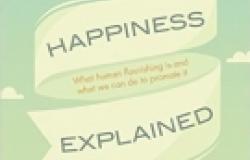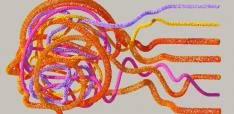Book Review: Happiness Explained: What Human Flourishing Is and What We Can Do to Promote It

Happiness Explained: What Human Flourishing Is and What We Can Do to Promote It by Paul Anand. Oxford: Oxford University Press, 2016. 160 pp, £12.99 hardcover 9780198735458
A better understanding of what human well-being is and how we can promote it is central at both the individual and the societal level. This knowledge is not only indispensable in the guidance that it offers us individually in our aim to lead good lives: it also is essential for assessing social progress and steering public policy.
In recent years, systematic analyses of well-being measures have provided substantial insights about the correlates of human well-being. In his latest book, Paul Anand, economics professor at the Open University and research associate at the Health Economics Research Centre (HERC) at the University of Oxford, offers an enjoyable and multifaceted tour of these insights. He looks beyond the boundaries of economics and pursues an interdisciplinary perspective that integrates insights from philosophy, psychology, and other disciplines into the conception termed ‘human flourishing’.
The starting point of Anand’s reasoning is the current debate about how to measure social progress. He builds on the claim that national income is an insufficient yardstick for quantifying progress and human well-being. A nation’s gross domestic product is, at best, only a narrow indicator of progress, as it does not incorporate aspects which are relevant for human well-being such as home production, values of assets, relative income effects or, more generally, inequality. Anand argues further that if we are concerned about the quality of our lives beyond financial aspects, a multi-dimensional approach to the measurement of human well-being is needed.
The human flourishing approach describes such a multi-dimensional framework of human well-being. Drawing on the capability approach developed by Amartya Sen and Martha Nussbaum, the human flourishing approach “views resources such as income as an input to the production of activities, and thereby experience, but doesn’t assume the connection must always be through the consumption of goods and services.” (p.13). Therefore, in Happiness Explained, resources – other than income – are identified that serve as stepping stones for the production of well-being outcomes. The concept of human flourishing emphasizes the reconnection of means with potential ends and thereby encourages us to consider the ultimate well-being outcomes that we wish to achieve, and reflect upon the necessary conditions in order to pursue them.
For the operationalization of the outlined framework, Anand refers to results from various studies related to happiness research that are based on a broad range of well-being measures. The main part of the book unfolds a “dashboard of indicators” (p.8) that covers a wide range of aspects related to human flourishing. This encompasses a discussion of well-being in domains such as work, family life, and health. It further incorporates the illustration of various determinants of well-being over the course of an individual’s lifespan, from early child development, to the quality of life in adolescence, and then to autonomy at the end of an individual’s life. It is highlighted that, beyond income, autonomy and social relations are important contributors to an individual’s quality of life. In another chapter, the author emphasizes the relevance of the psychological components that contribute to the quality of life beside the economic factors, such as friendship or prosocial behavior. He underpins these arguments with insights from a body of research on social relationships among animal species. For example, he discusses the positive relationship between a capacity to form social bonds and survival in the case of baboons, horses, and dolphins—a description that can be regarded as an entertaining digression in the book. Lastly, he discusses aspects of well-being that relate to fairness and justice. In order to underline how fairness contributes to well-being, the author reflects the spirit of John Rawls’s theory of justice in stressing the importance of distributive and procedural mechanisms for generating individual well-being and promoting successful collaboration. At the end, the multifaceted tour on insights stemming from a vast territory of research leads to four fundamental contributors to happiness and well-being – fairness, autonomy, community, and engagement.
Despite the broad range of studies referenced in Happiness Explained, it nevertheless remains unclear how these insights should be translated into policy implications. There is an inherent risk of naïve policy proposals. First, it is open to what extent the described correlates of well-being imply causal relationships – an issue that is hardly addressed in the book. Second, even if causal relationships are identified, it is hard to find institutions which are able to beneficially target the relevant causal channel. For example, when stating that “[i]n a number of countries increasing numbers of marital unions result in divorce which, evidence suggests, has a significant negative impact on life satisfaction” (p.30), the implications that the finding has for drafting a divorce law remains open. For this, a comparative institutional perspective would be required, which is rarely broached in the book. And third, from a public policy perspective, it is not possible to simply trade-off different factors that contribute to well-being. As the policies cannot be introduced into a static laboratory setting, in the real world they will be changed by forces such as interest groups in the political process, and the general equilibrium effects of policies might potentially lead to unintended and adverse side effects. However, the book lays the ground for addressing these challenges of operationalizing the outlined framework further in the future.
Overall, Paul Anand’s book Happiness Explained: What Human Flourishing Is and How We Can Promote It convincingly expounds the need for a rich conception of human well-being in order to quantify individual and social progress. His book provides the reader with a broader understanding of the drivers of human well-being, which tend to be neglected when basing government policy only on traditional welfare measures such as national income. Compared to books on happiness research rooted in economics, the focus on human flourishing incorporates insights from the capabilities approach and thus enriches the perspective on well-being outcomes by emphasizing the importance of opportunities. The book successfully provides an answer to the first question in the title, i.e., what human flourishing is, in an enjoyable and inspiring way. The second question, how human flourishing could be promoted, however, remains partly unresolved as the analysis does not discuss to what extent these insights can be applied directly as a guide for public policy.
Reto Odermatt is a Postdoctoral Researcher at the Center for Research in Economics and Well-Being (CREW) at the Faculty of Business and Economics of the University of Basel, Switzerland. In his current research, he conducts applied research using data on subjective well-being in the interdisciplinary field linking economics and psychology with the objective of enriching the conception of human behavior in economics.


